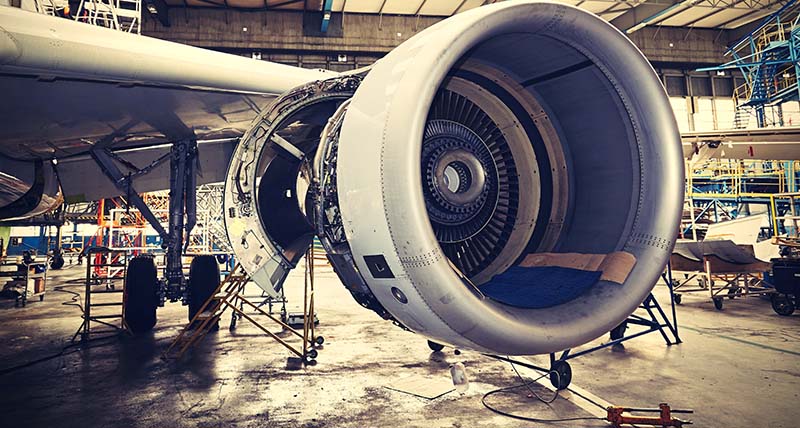Commercial aviation is entering a period of disruption and change. As demand for travel rebounds post-pandemic, airport operations have proven to be less resilient than before, resulting in delays and cancellations. Simultaneously, the industry is facing up its commitment to achieve net-zero emissions by 2050, and the fact that no single technology will arrive to meet the target, requiring wide-reaching transformation.
Meanwhile, new types of aircraft are on the rise taking advantage of electric propulsion, autonomous guidance systems, or both. The Advanced Air Mobility (AAM) sector is introducing new ways of moving people and payloads by air, and bringing aviation into new urban and rural environments. While AAM manufacturers are attracting headlines with growing number of orders and commitments, the practical applications of drones in the air transport are extensive, but the infrastructure required to support uncrewed aircraft is still in development.
Unmanned Traffic Management (UTM) systems facilitate the integration of unmanned aerial systems (UAS) into airspace, enabling data to flow between participants and establishing operational frameworks to handle a more complex air transport system without compromising safety. UTM promises to unlock new efficiencies and applications within the air transport system, and has a crucial role in enabling the rise of the wider AAM sector.
Cirium is in the forefront of the UTM space, working with partners across the ecosystem to support ground-breaking research, providing data and expertise and developing solutions to accelerate the adoption of drone applications.
Leading Project ATOMICUS
Cirium is applying its expertise in unmanned traffic management to drive the development of eVTOL and drone concepts through data research and product innovation.
ATOMICUS (Advanced Traffic Organization and Management of Intelligent Cargo Unmanned Systems) is a research and development project aimed at enabling the use of commercial drones at airports alongside traditional passenger aircraft. The project is creating and demonstrating digital infrastructure and operational procedures, establishing frameworks for data exchange and support standardization methods in the UK and internationally.
Focusing on commercially viable use cases, the project seeks to establish the viability of drones to be utilized for time sensitive cargo delivery, such as airport spare parts for Maintenance, repair, and overhaul (MRO) operations. Using drones for MRO has significant potential to reduce aircraft on ground (AOG) delays, reduce airline costs and remove traffic from the roads.

Establishing the business case for aircraft part delivery by drone
The project’s early findings indicate that the use of drones for aircraft part logistics can be extremely efficient, both in terms of cost and transportation time. comparing the transportation of aircraft parts from a single central point to multiple international airports in the UK, research carried out by the Connected Places Catapult and Cirium strongly indicates potential efficiencies of 50%-60% in both time and cost, with cost savings reaching 80% on some individual routes. The report also found that depending on the airport, UAV-based logistics could save between £3.7m-£11.5m over an entire year for payloads of 1kg.
On 30th September, the project will run simulated flight trials between St Athan, Hawarden & Cardiff Airports in Wales to test systems and workflows, and demonstrate the AOG use case between an airport and maintenance hub.
The ATOMICUS consortium is hosting a final showcase event on 26th October at the Urban Innovation Centre, at Connected Places Catapult London Office, where Cirium and other partners will present a demo, and discuss the lessons learned and project outcomes. Details on the event and how to attend can be found here.
Cirium is leading the project in partnership with ANRA Technologies, Connected Places Catapult, Neuron Innovations, Distributed Avionics and Southampton University (SOTON UAV). The project is part-funded by a £30 million UK Government awarded grant and supported by the Welsh Government, NATS, the Guild of Air Traffic Control Officers (GATCO), and Aerospace Wales.

Providing UTM-ready data
Integrating drones into airspace requires reliable, accurate and timely data to achieve situational awareness and ensure safe operations and inform flight planning. Cirium provides machine-readable, spatially enriched and easily accessible NOTAM, TFR and Airspace data to enable a precise, reliable, and common situational picture.
This includes a full set of enhanced global NOTAMs for consumption by Uncrewed Aerial Systems (UAS). By providing full lifecycle support and geometry, NOTAMs are enriched with high-quality aeronautical datasets. This enables a complete and up-to-date global picture of the airspace, including any relevant events and restrictions for planning, monitoring and deconfliction.
Enabling the future of air transport
Unmanned traffic management promises to play a vital role in aviation’s digital transformation, underpinning new applications, increasing efficiency, and opening new markets. Cirium’s data and expertise are helping organizations across the sector realize opportunities; contact our experts to learn how we can accelerate your UTM projects.
























































